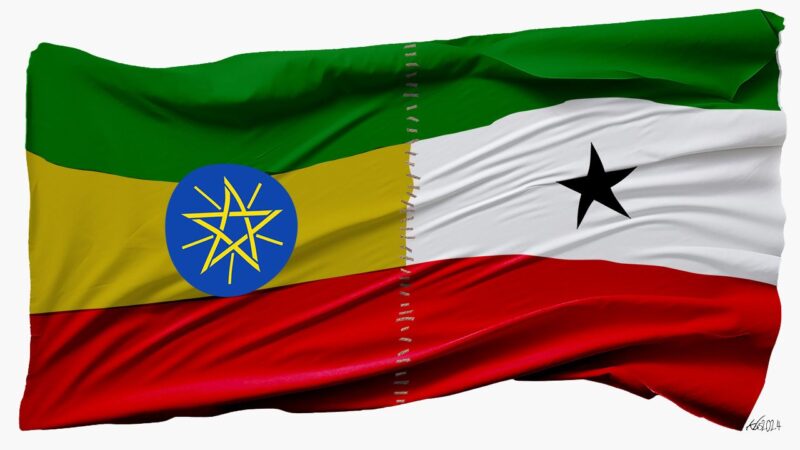Tax incentives are deductions, exclusions, or exemptions from taxes that are due to the government. They are employed as incentives to draw money flows into desired economic sectors or areas, or to make particular investments. Thus, tax incentives lower a person’s or a business’s tax liability while costing the government money. They may be cost-based, meaning they lower the cost of capital, or profit-based, meaning they minimize income taxes.
Profit-based incentives include tax exemptions, tax holidays, tax deferrals, tax allowances, special economic zones, and financing incentives, while cost-based incentives include investment allowances, tax credits and investment tax credits.
The government agency in charge of assessing, collecting, and accounting for all revenues in Kenya is the Kenya Revenue Authority. In accordance with the Income Tax Act, the Authority offers fiscal (tax) incentives in collaboration with other regulators and facilitators, including the Capital Markets Authority (CMA) and the Export Processing Zones Authority (EPZA – for the granting of EPZ incentives), among others.
The total amount of money that the government forfeits as a result of providing tax incentives is known as tax expenditures. Over the past five years, tax expenditures have averaged KSh383.9 billion, which is nearly equal to the KSh382.6 billion allotted to counties in the 2020–21 fiscal year and nearly half the KSh651 billion earmarked for debt payments in the same fiscal year.
This has led some economists and development professionals to argue that, given the limited budgetary space the government has had to operate in over the last five years, money lost through tax expenditures could be used to pay down debt and could also greatly boost the resources available to county governments.
In effect, while the budget has expanded, resource needs have grown even more. Yet the provision of basic public goods and services, such as health, education, and other social amenities like water, electricity, and roads, has been restricted in favour of debt servicing, pensions, and salaries. Late revenue disbursements to the counties have made the situation worse.
Kenya’s public debt portfolio has grown dramatically over the past ten years due to borrowing to cover fiscal deficits; it went from KSh1.4 trillion in June 2011 to KSh8.2 trillion in December 2021. According to projections from the Parliamentary Budget Office (PBO), the entire amount of debt outstanding is expected to surpass KSh10 trillion by the end of 2024, with debt servicing accounting for 65% of all revenues received during the 2023–2024 fiscal year.
Transparency of Tax Expenditures
A comprehensive set of laws, regulations, and guidelines mandate that the Treasury guarantee the openness of tax expenditures. In reality, however, there is a level of opacity that prevents public scrutiny and encourages abuse of tax expenditures. Moreover, there are no provisions in the current tax expenditure legislation for situations in which it may be determined that the recipients have violated the requirements to qualify for tax exemptions.
Furthermore, the Treasury has consistently disregarded the law’s requirement that it disclose information on tax expenditures to the public on a regular basis. The tax expenditure data currently available only goes back to 2017, leaving out information for earlier fiscal years. The Treasury published the first ever Tax Expenditure Report on Kenya’s tax expenditures for the 2017-2020 period in September 2021. The report is insufficiently detailed, providing only the total amount of revenue that the government has conceded as a result of the preferential tax schemes. Some stakeholders contend that rather than being a proactive step to improve openness, this was mostly done to comply with IMF requirements.
Access to comprehensive data about the recipients of tax expenditures and the criteria used to grant incentives is likewise severely lacking in transparency. This restricts scrutiny and makes it more difficult to conduct a thorough analysis of the costs and benefits accrued.
There are also challenges in accessing information about the requirements that the various taxpayers must meet to be eligible, and the steps taken in the event that businesses or other entities do not fulfil the requirements on the basis of which the incentives are offered—such as the creation of jobs, among other things.
Essentially, a prudent framework for tax expenditures needs to include procedures for disclosing information on the number of taxpayers who meet the requirements for each tax expenditure and the specific eligibility criteria. For example, the Corporate Income Tax (CIT) tax expenditure requires companies to fulfil certain conditions such as offering employment opportunities to residents in the area in which they set up. It becomes more difficult to hold businesses that profit from tax benefits accountable without the disclosure of such information. The lack of this kind of data also makes it more difficult to evaluate the costs and benefits of tax expenditures in making future-oriented tax expenditure policy decisions.
Accountability of Tax Expenditures in Kenya
The Treasury has continuously neglected to conduct assessments of the various tax expenditures, despite the government providing the goals and specific policy objectives of the numerous preferential tax schemes. Therefore, without knowledge of how well specific preferential tax policies have performed in the past in terms of achieving goals, it is difficult to comprehend the rationale offered by the government for their continued implementation. The reviews that have been conducted have largely involved altering the composition and structure of the tax expenditures without evaluating their efficacy. As a result, it is possible that some tax expenditure decisions made by the government have been implemented without the necessary accountability as required by law and could be resulting in net revenue losses.
Moreover, the laws governing tax expenditures do not provide for sunset clauses and there is currently no data available concerning expiry dates for many existing tax expenditures in Kenya. This leaves room for the abuse and manipulation of incentives to benefit entities with close relationships at the highest levels of government decision-making. Furthermore, even in cases where expiration dates seem to exist, there has been a propensity to renew or modify current incentives without following the proper procedures.
The end result is a framework for tax expenditures that, in particular, permits foreign corporations to come into the country, attract incentives, and repatriate benefits over extended periods of time without facing scrutiny or legal repercussions should they fail to comply with the requirements.
Tax Expenditure Efficiency and Equity
Assessing the equity of tax expenditures is necessary to determine who benefits from them – whether the preferential tax treatments give more economic advantages to the wealthy than to the poor, or whether they make the tax system as a whole more or less equitable. However, estimating the impact of investment incentives requires data regarding the identities of the beneficiaries and the tax benefits they receive. These data needs are unachievable, particularly for developing countries like Kenya where weak governance results in a lack of government accountability and openness, information asymmetries, and restricted public participation in policymaking.
In general, the tax expenditures incurred by the government of Kenya seem to benefit the middle and upper classes more than the lower-income groups, especially the very poor. Furthermore, it appears that corporations benefit more from tax expenditures incurred under the VAT than small and medium enterprises. And even among corporations, multinational corporations tend to attract more incentives than local businesses.
Moreover, manufacturing, finance, insurance, and construction appear to benefit more from tax expenditures than agriculture, the largest employer and a significant contributor to the country’s GDP and overall economic growth.
A review of the 2021 Tax Expenditures Report shows that the government has lost a significant amount of money as a result of tax expenditures in the manufacturing, agricultural, construction, banking, and insurance sectors. Returns in terms of growth, employment creation and other connected benefits such as export growth appear not to be commensurate with the tax expenditures incurred.
The report shows, for instance, that tax expenditures have been steadily rising for the manufacturing sector; in the period between 2017 and 2019, the sector received KSh33.1 billion in tax expenditures on average. However, the sector’s share of GDP has been declining over time, falling 1.7% between 2016 and 2020.
A second Treasury report published in November 2022 is similarly a summary of tax expenditures for 2021. The figures show an 18.3% increase in total tax expenditures, from KSh267.1 billion in 2020 to KSh316 billion in 2021. Figures published by the Treasury in October 2023 record an increase to KSh393.6 billion in 2022.
The Treasury attributes the rise in total tax expenditures between 2020 and 2022 to increased expenditures across the various tax heads brought on by an expansion of economic activity. The report also says that a review of various tax laws has also resulted in the introduction of new tax incentives. Specifically, the government introduced a 150% capital allowance to encourage investment, eliminated import duties to allow the importation of food items into the country to protect Kenyans from the high cost of food due to the drought and rising commodity prices, and introduced insurance relief for NHIF contributions.
While the 2022 report notes that “there is a need to have an elaborate framework for monitoring and evaluating the impact of tax expenditure in the economy”, this does not yet seem to be in place, with the 2023 report concluding that “the Government will continue to rationalize and harmonize the tax expenditures with the aim of removing redundant tax expenditures while enhancing those intended to promote investments” and confirming only that the Treasury is automating tax exemption procedures in order to reduce processing times and increase efficiency.
Evaluating the costs and advantages of tax expenditures in order to make future-focused tax expenditure policy decisions will remain challenging in the absence of a strong framework. Yet, thus far, the reviews that have been carried out have entailed making changes to the structure and composition of tax expenditures without assessing their effectiveness.








